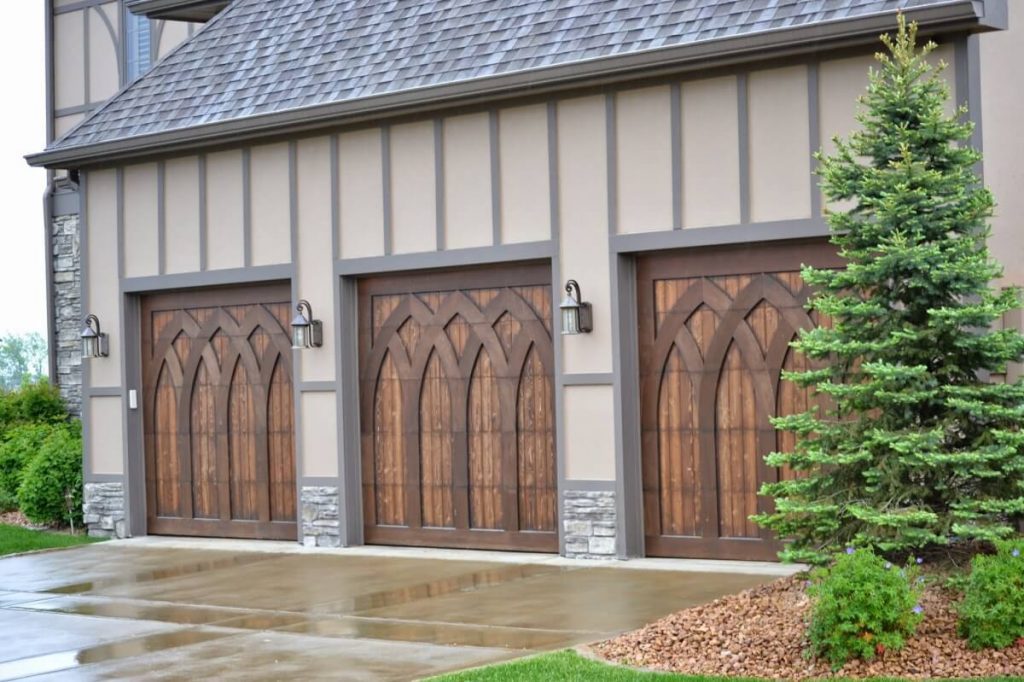
Homeowners rarely give their garage doors a second thought, and often not realizing the true importance of regular garage door maintenance. Of course, it can be easy to overlook the more detailed inner workings of the creature comforts we have at home. That said, garage doors have a lot of moving parts, doing a lot of heavy lifting. One part that is integral to your garage door functioning properly is the garage door springs. The garage door spring is the lynchpin to a garage doors’, acting as counterweights to offer balance and stability.
So what happens when these workhorses start to malfunction, begin to fail, and eventually break? Well, we’re here to give you the lowdown on what to do with a broken garage door spring and when you should replace them.
What to Do With a Broken Garage Door Spring?
The garage door is arguably the largest moving part of your home. All garage doors rely on heavy-duty springs to make them go up and down. When you consider the weight of a garage door, with single doors weighing about 120 pounds to heavier garage doors clocking in at 350+ pounds, one can begin to understand just how important having sturdy garage door springs is.
As with any appliance or hardworking household gadget, eventually, they need to be replaced. Garage door springs are no exception. And while they are made to last, their lifespan is finite. Estimating just how long garage door springs last is not an exact science. It will depend on how often you come in and out of your garage on a daily basis, how much pressure they are enduring, how heavy your garage door is, and also the weather.
Typically, a quality garage door spring should be able to withstand about 10,000 cycles of opening and closing before they need to be replaced, and that’s without other factors like rust or corrosion occurring. Obviously, the more often you command your garage door to go up and down, the shorter the lifespan. To extend the lifetime of your garage door springs, some experts may recommend purchasing extended lifespan torsion springs. While more expensive, the manufacturer claims they can last about 4x longer than traditional garage door springs.
When a garage door spring breaks, it’s a pretty big deal. Your garage door will cease to safely go up and down. You have a couple of options, call a professional or go full-on DIY and replace the garage door spring yourself. Replacing a garage door spring on your own may prove to be difficult for those that aren’t experienced.
The difference in price is about $150-$300 if you call a garage door repair company, down to $30-$100 if you choose to purchase the parts yourself and give it a shot. Inexperienced DIY’ers should proceed with caution. If you do decide to take on the project and repair your garage door springs and forgo calling the pros, here are some things you should know before hitting the hardware store.
Know The Different Types of Garage Door Springs
Obviously, you’ll want to know what type of garage door springs are needed before attempting to replace the broken springs or spring yourself. Garage door springs fall into two different categories:
1. Extension Springs
Extension springs run along the horizontal tracks of your garage on either side of the interior. When the garage door is signaled to raise and lower, the extension springs stretch out and “extend” to allow the door to move, hence their name. They come in three different types, clipped-end, double-looped, open-looped. Here are the differences between the three.
- Clipped-end extension springs are typically the most sturdy of the three and tend to last longer. Homeowners that have a larger garage with a door weighing over 250 lbs may benefit from installing clipped-end extension springs.
- Open-looped extension springs are quite common but are the weakest of extension springs. They operate on a wire at the end of the spring, but once that wire breaks, the entire spring needs to be replaced.
- Double-looped extension springs connect to a pulley and eyebolt and are arguably stronger than the open-looped spring that has less durability.
2. Torsion Garage Door Springs
Depending on the size and weight of your garage door, your garage could have up to four torsion springs installed on it. These springs are located above the door opening, not on the sides. When your garage door springs are assembled, they are calibrated to a specific torsion setting for the configuration and specs of your garage door. There are four different types of torsion garage door springs:
- Steel rolling-door torsion springs are designed to accommodate commercial properties, warehouses, and industrial buildings. They are outfitted within a torsion barrel for durability.
- For residential homes with lighter aluminum garage doors, standard torsion springs are a good fit. One should do the trick, instead of the two.
- Similar to the standard spring, early-set torsion springs are mounted in the center of the torsion shaft.
- Torque-master torsion springs are fixed in place by a winding cone at the end of each torsion rod. Each is enclosed in the shaft.
If you are having doubts about what kind of garage door spring you are trying to replace or are uneasy about calibrating your garage door spring for the proper tension and torque, it may be best to call a certified garage door repair professional and have them replace it.
Contact Precision Door Service of Las Vegas
When in doubt, call the professionals at Precision Garage Door Las Vegas. Don’t get trapped in your garage or in a situation where you’re unable to open and close your garage door. We can send a technician out immediately to repair or replace your broken garage door springs.
Our technicians are trained to handle all kinds of garage door, opener, and sensor issues and fix the problem. Call 702-637-2700 for same-day service.





